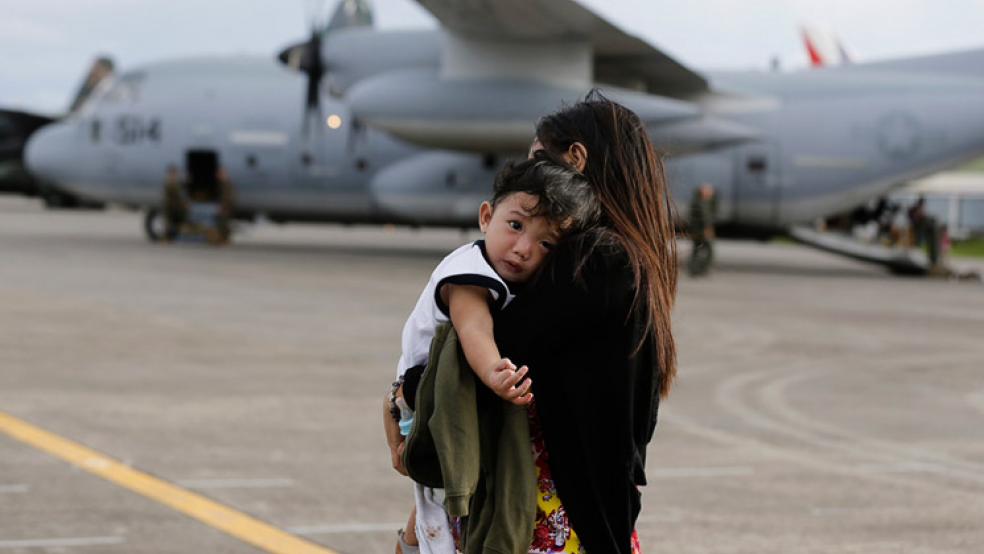Tragedy can bring out the best in people, but it can also bring out the worst. While the world watches with devastation wrought by Typhoon Haiyan in the Philippines, scammers see the opportunity for profit.
“The life cycle of scams has ramped up such that before the rain has stopped bogus emails are in your inbox,” says Joe Rideout, a spokesperson for Consumer Action.
A year ago, mere hours after the Sandy Hook Elementary school shooting, scammers were posing as victim's relatives asking for support. Even before Hurricane Katrina hit, some 4,000 websites popped up asking for donations that would have never made it to the victims.
Related: Typhoon Haiyan Response by Military: Big and Bold
If you want to contribute to the relief efforts, you’ll want to not only avoid scammers, but also to make sure that your money goes to an organization that will do the most possible good.
Know the tricks
Cyber security firm Symantec is reporting that charlatans have already begun running cons associated with the Haiyan, including one in which a “reporter” on the ground in the Philippines sends emails asking for help and offering a quick way to send money. “Like the Sandy Hook case and many others, the appeal is personal in tone, reveals a direct connection to the event, and offers a stress-free method of giving,” says Ronald Pitcock, a Texas Christian University professor who teaches a course called The Nature of Giving. “They appeal to the human desire to do good and to help specific people,” he says.
Most people know not to give money to a stranger that sends an unsolicited email, so scammers are also turning to other methods of communication. Generally, be leery of any direct solicitation, whether via email, text messages, tweets, or messages on social networking sites. If you suspect a fraudster has contacted you, report it to the Justice Department’s National Center for Disaster Fraud.
Choose organizations wisely
Even giving to quasi-legitimate non-governmental organizations on the ground in the Philippines is not a sure bet that your money will go where you intended. “A relief effort on this scale is an incredibly complicated operation, with large parts of the infrastructure wiped out, there are a million points between when a donation is received to when it is handed out as substantive aid where those resources can be stolen or squandered,” says Philip Becnel, managing partner of the investigative firm Dinolt Becnel & Wells.
Your best bet is to stick with names you know—think the American Red Cross or Doctors without Borders--or research an organization before you give. Charity Navigator has ratings of charities providing relief for the typhoon. Give to specific causes, rather than general requests. Good organizations will reveal where donations are going, providing water, food and shelter to families living in evacuation centers, for example. Maximize your donation even further by seeing if your employer will match it.
Related: Why Everything You Know About Charitable Giving Is Wrong
“If a nonprofit has a weird website—the font is odd, there's only one page on the site, there's no language about donations being tax deductible, there's no mission statement--that's a red flag,” says Linda Nichols, a spokesperson for Guidestar.org, a Web site that let’s consumer evaluate an organization’s reputation and effectiveness. “Listen to your gut instincts. If something seems out of place, go on to the next charity.”
Stick with checks or credit cards
Bills are far too easy for swindlers to pocket or mishandle, and while you may want to give clothing or food, efficient organizations will collect such items nearer to the disaster site to avoid the cost and time associated with shipping them from the states. Paying with a check (made out to the organization rather than an individual) or credit card also comes in handy for tax purposes, says Ed Mierzwinski, consumer program director for advocacy group U.S. PIRG. Donations given to any 501(c)(3) organization are tax deductible. (Check the status of an organization here.)
For donations under $250, you’ll need a written record, such as a cancelled check, credit card receipt, or statement from the charity. For donations over that amount, you’ll need a statement from the charity detailing the amount of the deduction and whether you received any goods or services in exchange for it. If you did receive a gift or service, you’ll need to subtract its value from the amount you contributed. In general, you need to itemize your taxes in order to deduct your giving.
Top Reads From The Fiscal Times:

